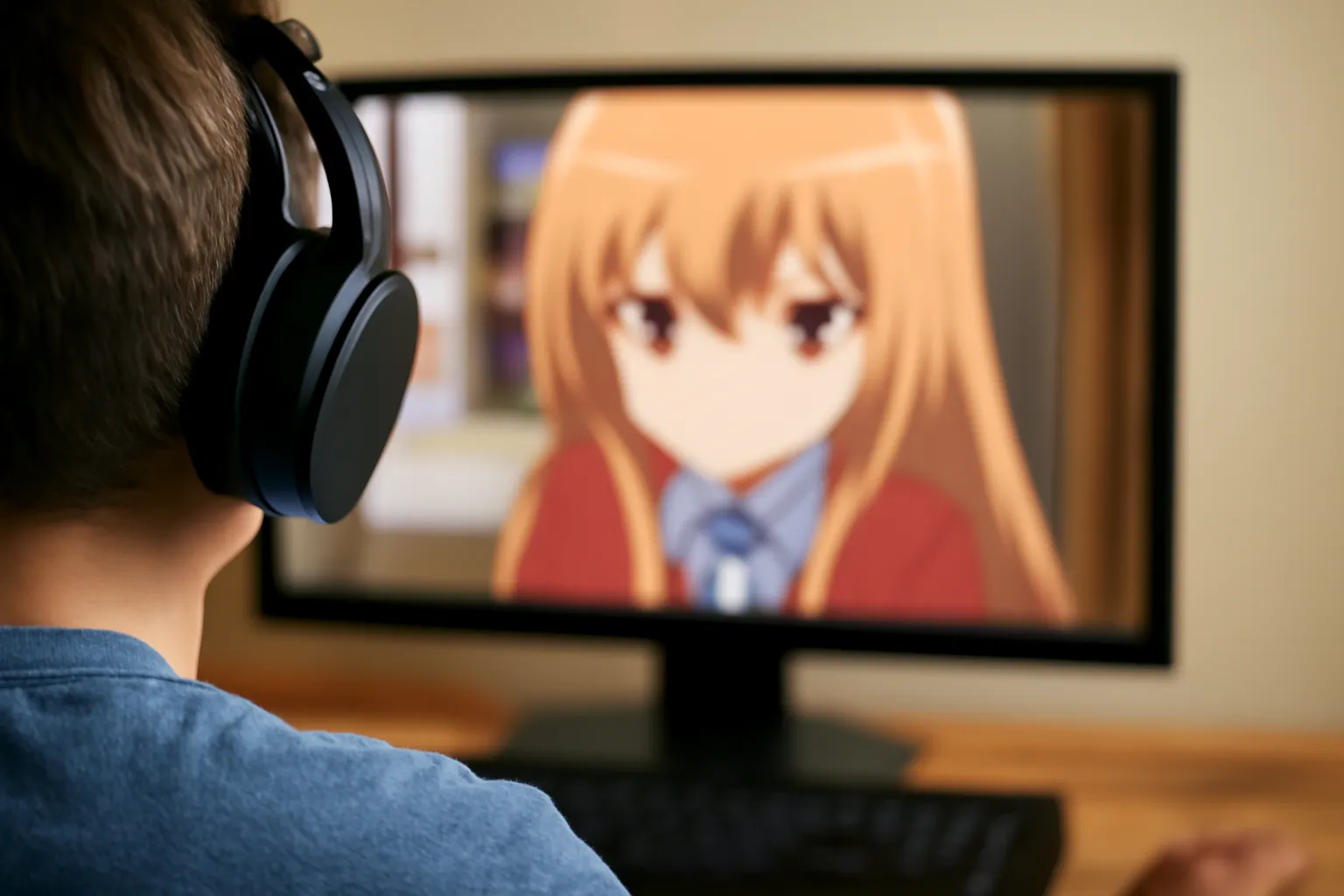Table of Contents
Streaming anime on Twitch is a popular pastime for many content creators and fans, but with the platform’s evolving rules and the increasing presence of copyrighted content, the question remains: Can you get banned for streaming anime on Twitch?
If you’ve ever considered streaming anime, whether for a watch-along, reaction, or as part of your regular content, it’s important to know the risks involved.
In this blog post, we’ll explore why streaming anime on Twitch can lead to a ban, how to legally stream anime, and the risks of copyright violations.
We’ll also break down real-life cases of popular streamers like Tectone and Disguised Toast, who have faced bans related to anime streaming. Plus, we’ll offer up-to-date tips on how to avoid getting banned and explore potential alternatives to Twitch for anime streamers.
Twitch’s Anime Streaming Policies (2025 Update)
Can You Get Banned for Streaming Anime on Twitch?
The short answer is yes, you can get banned for streaming anime on Twitch. Twitch’s Terms of Service prohibit the streaming of unlicensed content, which includes most anime unless it’s specifically authorized by the content owners or streaming platforms.
This means that unless you have permission, streaming anime on Twitch could lead to a DMCA takedown, which may result in a temporary or permanent ban depending on the severity of the violation.
DMCA Takedowns and Twitch’s Ban System
Twitch operates under the DMCA (Digital Millennium Copyright Act), which allows copyright holders to request the removal of infringing content. If you stream anime that is not licensed for distribution on Twitch, you risk receiving a DMCA strike, which could lead to penalties like a ban.
Depending on how many violations you’ve had, these strikes can lead to a permanent suspension from Twitch.
However, in recent updates to Twitch’s ban system (2025), the platform has introduced measures like expiring violations, meaning DMCA strikes now have a set lifespan. But even with this update, multiple strikes within a certain period can lead to a longer or permanent ban.
Twitch’s Transparency Reports have highlighted an increased focus on combating unlicensed content, especially with the rise in anime streaming.
Read also: Why ManhuaScan Isn’t Working
Why Streamers Like Tectone and Disguised Toast Were Banned?
Tectone’s Ban: What Happened?
Tectone is a popular streamer who has faced a lot of scrutiny for streaming anime on Twitch. While Tectone’s ban wasn’t solely about anime, his case is often brought up as a cautionary tale. Tectone has mentioned that his Solo Leveling stream was the main trigger, but there were likely other violations related to anime content. His ban caused quite a stir, with some fans speculating it was due to a lack of licensing for certain shows.
Disguised Toast and the Crunchyroll Partnership
Disguised Toast faced a ban when he streamed anime without proper licensing. However, Toast’s situation was resolved when he struck a deal with Crunchyroll, a legal anime streaming platform. After forming this partnership, Disguised Toast was able to legally stream anime on Twitch, allowing him to avoid future issues with DMCA takedowns. His case highlights the importance of licensing agreements in avoiding bans on Twitch when streaming anime.
How to Legally Stream Anime on Twitch Without Risks?
Twitch Watch Parties: A Safe Way to Stream Anime
One of the best legal methods for streaming anime on Twitch is through Watch Parties. Twitch offers a Watch Party feature that allows streamers to stream movies and shows from Amazon Prime Video to their viewers. However, you must link your Amazon Prime account to your Twitch account to access this feature. This is a great alternative for streamers who want to showcase licensed anime content without worrying about DMCA violations.
Important: Watch Parties are limited to content available on Amazon Prime Video, so you won’t be able to stream any anime that isn’t available through this service.
Partnering with Anime Streaming Platforms (Crunchyroll)
Another way to legally stream anime is through licensing agreements with streaming services like Crunchyroll. If you want to stream anime on Twitch, securing a partnership with a streaming platform like Crunchyroll is one of the safest ways to avoid potential bans. For instance, Disguised Toast’s deal with Crunchyroll allowed him to stream anime legally without facing the risk of DMCA strikes.
Fair Use Guidelines for Short Clips
If you’re streaming anime clips as part of your reaction content, it’s important to adhere to Fair Use guidelines. Fair Use allows you to use short clips of anime for commentary or parody purposes, but the clips must be short and transformative. Simply streaming full episodes or large portions of anime without permission is still a DMCA violation and can lead to a ban.
Twitch vs. Kick: Which Platform Is Safer for Anime Streamers?
Twitch’s Strict DMCA Enforcement
Twitch has strict policies when it comes to unlicensed content. For anime streamers, this means that streaming unlicensed anime can result in DMCA takedowns and bans. As a result, Twitch’s enforcement of DMCA violations makes it a risky platform for anime streamers unless you have proper licensing.
Kick’s Looser Policies
Kick, a newer streaming platform, is gaining traction with some anime streamers because its DMCA enforcement policies are looser compared to Twitch. However, while Kick offers more freedom in terms of streaming content, it’s important to be cautious of the platform’s content regulations. While it might seem like a safer alternative for anime content, Kick’s policies may change, and streamers should keep updated on any legal developments.
| Feature | Twitch | Kick |
|---|---|---|
| DMCA Enforcement | Strict (AI + manual strikes) | Loose (rare strikes) |
| Anime Partnerships | Prime Video Watch Parties | None (but allows unlicensed) |
| Ban Transparency | Improved (2025 policy updates) | No clear system |
| Revenue Split | 50/50 | 95/5 |
What to Do If You Get a DMCA Strike on Twitch
If you’ve already received a DMCA strike on Twitch for streaming anime, here’s what you can do to remedy the situation:
Step 1: Remove the Content
If you’ve received a DMCA strike, the first step is to remove the offending content (VOD or stream) immediately. Twitch provides tools to delete VODs or remove clips that violate its policy.
Step 2: Appeal the Strike
If you believe the strike was unfair or a mistake, you can appeal the DMCA strike through Twitch’s support. However, appeals should be used sparingly and only if you have a strong case.
Step 3: Prevent Future Strikes
Moving forward, make sure to stream only licensed content, use Watch Parties, and keep track of your licensing agreements to avoid future strikes.
Alternatives to Twitch for Anime Streaming
Discord: A Community-Focused Option
If you’re looking for a platform that doesn’t impose the same restrictions as Twitch, Discord is a great alternative. Discord offers a community-focused space where users can host anime watch parties with friends or followers. As long as you’re not broadcasting to a larger audience, Discord can be a safe and fun way to watch anime without facing legal issues.
YouTube: Another Option for Streamers
YouTube is another platform where anime streaming is possible, but only if you’re careful about copyright. You can use Fair Use guidelines for reactions and discussions about anime, but keep in mind that YouTube’s content ID system is strict, and unlicensed streaming can get your channel demonetized or taken down.
Tenami: A Platform for Streaming Anime Safely
Tenami is another relatively new platform that allows for safe anime streaming. Tenami offers licensed anime streaming through agreements with content providers, allowing streamers to legally broadcast anime content to their audiences.
Final Thoughts on Streaming Anime on Twitch
Streaming anime on Twitch may seem like an exciting way to engage with your audience, but it comes with significant risks if you’re not following the platform’s policies. While DMCA takedowns and Twitch bans are real threats, there are legal workarounds like Watch Parties and partnerships with platforms like Crunchyroll that make anime streaming safe.
As Twitch updates its policies and with alternative platforms like Kick and Discord, the landscape of anime streaming continues to evolve. Streamers must stay informed, follow the rules, and explore legal ways to share anime with their communities. By adhering to these guidelines and utilizing proper licensing, you can enjoy streaming anime without the fear of a ban.

